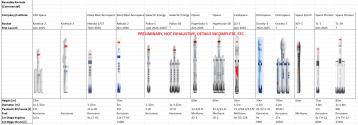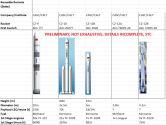by78
General
(Continued from above...)
In a more positive development for i-Space/Interstellar Glory/Interstellar Space Honor, the company has broken ground on its launch vehicle assembly plant in Wenchang. The project covers an area of 90 acres. Once completed, it will have the capacity of assembling three launch vehicles simultaneously and an annual capacity for producing/turning around 36 re-usable launch vehicles.






In a sign that private launch providers are quickly coalescing their infrastructure around Wenchang, i-Space/Interstellar Glory also announced that it plans to build a rocket assembly and testing facility in Wenchang, which will have the capacity to inspect and recycle 40 recovered reusable rockets annually.

More slides from i-Space/Interstellar Glory, with salient points being summarized below:
1) Infrastructure construction:
– The Pangezhuang launch vehicle production base in Daxing District, Beijing houses various facilities for rocket assembly and testing, propellant tank (stir-welding) production, LOX/Methane engine mass production, attitude and orbital control units final assembly, and liquid launch vehicle R&D, etc. The Pangezhuang base has achieved trial production capacity.
– The propellant tank welding production line has completed equipment debugging and process verification. i-Space is currently developing a 4.2-meter propellant tanks.
– A high-thrust engine test bench and a power system test bench are under construction.
– The company is actively participating in the construction of commercial launch sites, as well as building a facility for recycling recovered rockets.
2) Launch vehicle lineup:
– SQX-1 small solid-fueled vehicle
– SQX-2Y reusable technology verification vehicle
– SQX-2 small reusable vehicle
– SQX-3, and -3B medium-and-large reusable vehicle
3) R&D on reusable launch technology:
– Through the development of SQX-2/2Y, 18 key technical breakthroughs have been made, which were verified through simulation and/or ground tests, and the vertical takeoff and landing demonstration was successfully carried out twice (on November 2 and December 10, 2023, respectively).
– For the development of SXQ-3, focus is placed on six key technical areas: overall design of reusable launch vehicles, high thrust-to-mass-ratio 100-ton LOX/Methane engine, design and manufacturing of large-diameter tank frame-and-truss reinforced barrel sections, non-pyrotechnic stage separation, intelligent fault diagnosis and analysis, engine containment in case of RUD, etc. The rocket has completed a total of 45 verification tests, fully verifying key reusability technologies.
4) First orbital test flight of SQX-3 will be conducted in 2025 and first orbital flight with recovery will be carried out in 2026. By 2030, i-Space plans to have an annual launch capacity of 20 per year, basically achieving cost-effective, efficient, and volume launch capability.
In a more positive development for i-Space/Interstellar Glory/Interstellar Space Honor, the company has broken ground on its launch vehicle assembly plant in Wenchang. The project covers an area of 90 acres. Once completed, it will have the capacity of assembling three launch vehicles simultaneously and an annual capacity for producing/turning around 36 re-usable launch vehicles.






Last edited:











